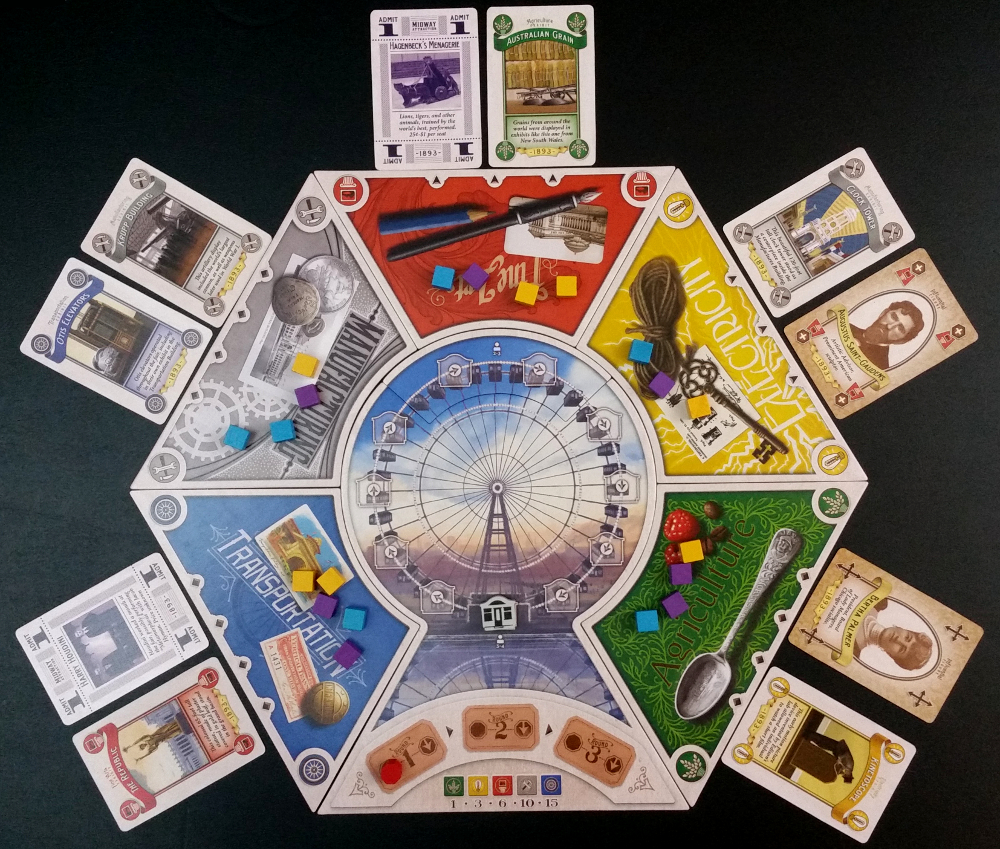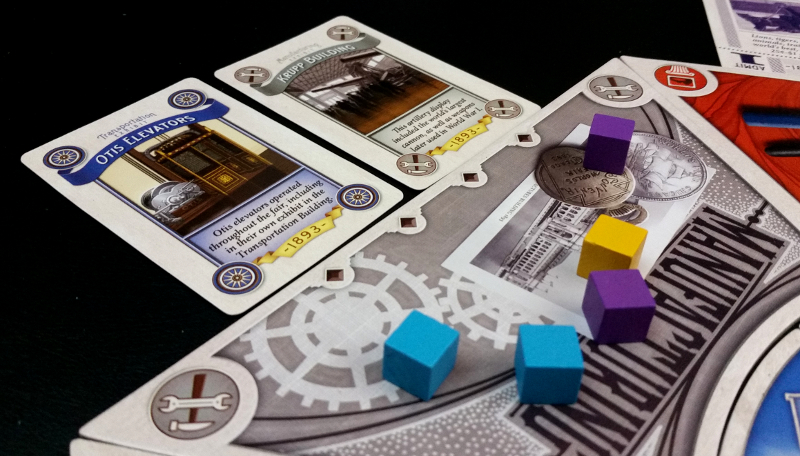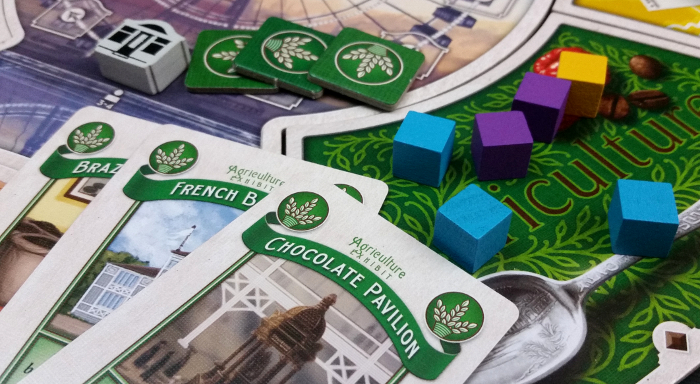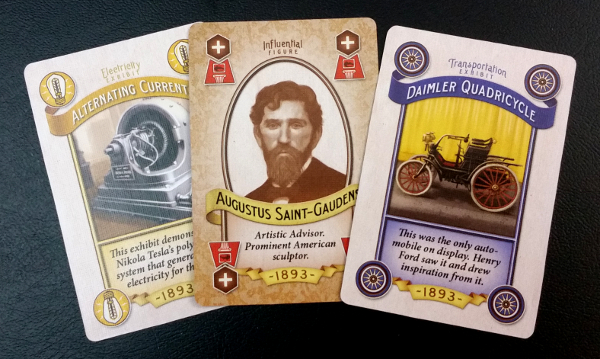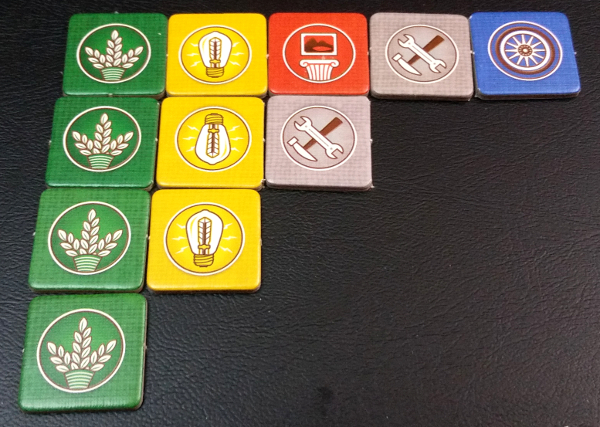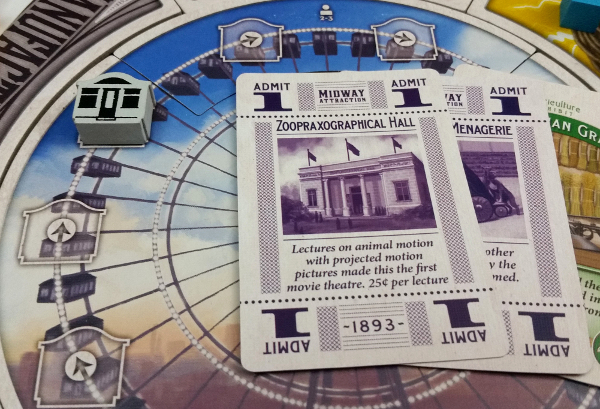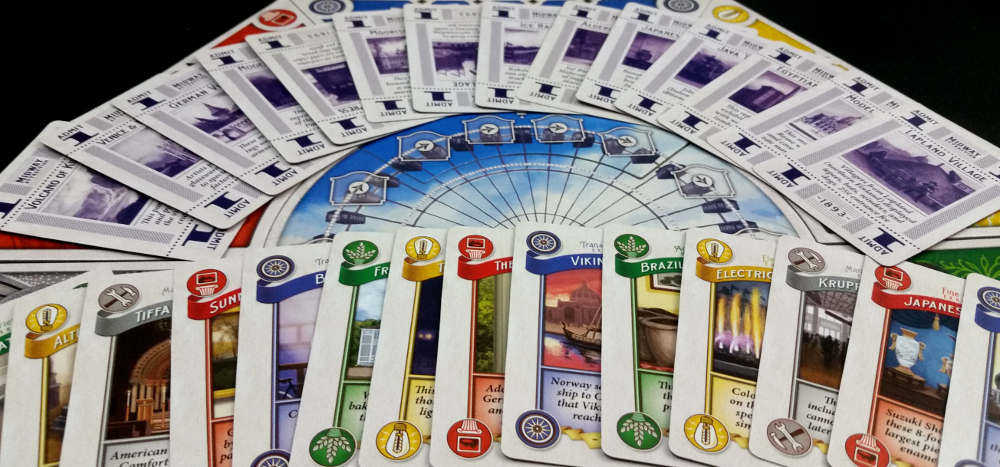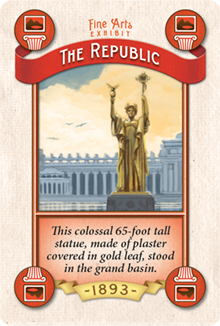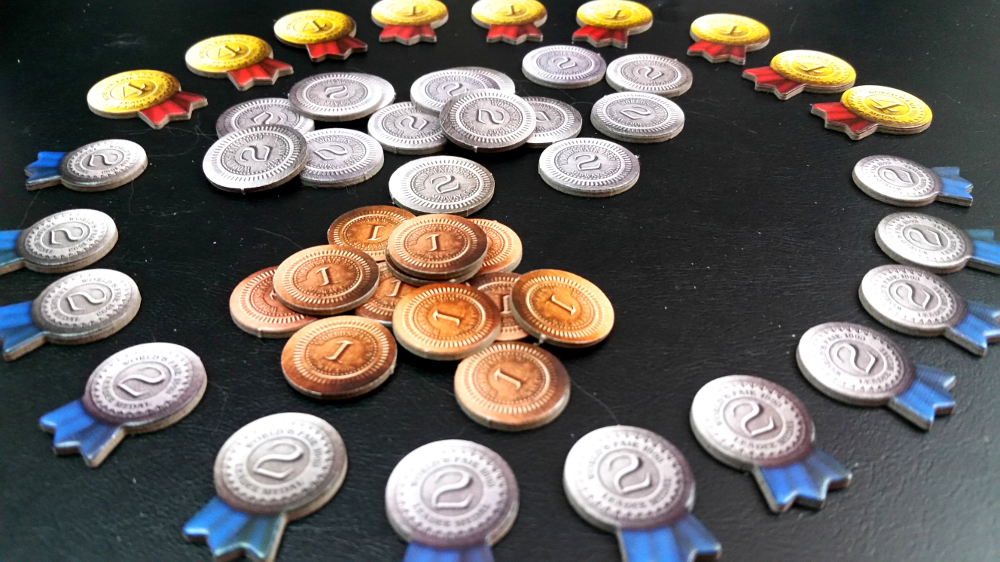Under the excuse of scouting new clients for Pitkin and Brooks, Frank seized upon the opportunity to once again venture to the White City. It had almost become a weekly ritual. Sometimes he would bring his wife and sons to experience the latest marvels of the fair, though he was equally happy wandering the electric-lit streets and letting himself be overwhelmed by the grand spectacle around him. With such a wide array of ideas, cultures, entertainment, and technology all converged in one place, the exposition radiated with an energy that made him feel like a child again. Frank felt a magic here, especially with how quickly it had been transformed from mere parks and swampland into something far more majestic. As he strolled the whitewashed buildings, destination unknown, he started imagining the fair as a great city of a foreign land…
…though in his mind, the city would be green…
The Premise
The Chicago World’s Fair of 1893 was one of the most stunning, extravagant, and complex exhibitions of its time. Featuring a wide spectrum of scientific, cultural, and technological achievements from dozens of countries, it took enormous organizing effort. As one of the Fair’s organizers, players must use their influence to emerge with the highest reputation.
The Rules
Compared to its real life counterpart, World’s Fair 1893 is a humble game of trying to have the most cubes in locations while also collecting sets of items. The game sets up quickly, as it’s comprised mostly of a central six-tile board, a deck of cards, supporter cubes, and exhibit tokens.
To start, the game’s five colored Area tiles are randomly placed around the central Ferris Wheel, with each Area representing a different type of exhibit. The Ferris Wheel controls the length of each round by way of wheel car spaces, the number of which which varies depending on player size. Next, two cards from the deck are dealt next to each Area. The main deck consists of three card types: Exhibits, Influential Figures, and Midway Tickets.
Each player begins with a set of supporter cubes and places one on each Area. The starting player is determined randomly, with players receiving bonus starting supporters based on turn order.
World’s Fair is played over three rounds, each with a variable number of turns. Each turn has four steps. First, the player places a supporter on one Area. Then, they must play any Influential Figure cards in their hand. These cards give players special actions, such as placing additional supporters, and are then discarded. Next, the player collects all of the cards from the Area in which they placed their initial Supporter. For each Midway Ticket collected, the Ferris Wheel moves one space. Finally, the board is repopulated by adding three new cards clockwise around the board, starting with the Area they claimed the cards.
Turns continue until the Ferris Wheel performs a complete revolution, which triggers the end of the round. At that point, scoring occurs. First, players redeem their Midway tickets by exchanging them for one victory point per ticket. The player with the most Midway tickets receives an additional two points. Players then attempt to convert Exhibit cards in their hands into exhibit tokens. For each Area, the player(s) with the most cubes at that location may exchange a number of Exhibit cards of that location’s color for matching exhibit tokens, as well as a handful of points. Once scoring is complete, players pull back half their supporters from each Area and play resumes.
At the end of the third round, the game is over. After conducting normal scoring, players gain points for having complete sets of exhibit tokens. The person with the most points wins. They will go on to widespread acclaim as the marquee organizer behind the wildly successful 1893 World’s Fair.
Everyone else is on cleaning duty.
A Crescendo Of Character
Beyond its great visual presentation and creative premise, one of the best attributes of World’s Fair 1893 is that the game does an excellent job of slowly ratcheting up complexity, allowing for an incredibly low barrier of entry while still providing a sense of building towards a substantive goal. World’s Fair 1893 does an excellent job creating incrementally tougher decisions over a mere three rounds.
For instance, the early turns of the first round are consist mostly of taking cards you think you may have a chance at turning in or that will give you some kind of short-term advantage. As the game advances, though, you’ll develop a clearer sense of direction while also having more choices to consider, such as whether to focus on specific Exhibit locations or going after Midway cards for guaranteed points. Indeed, the more resources you amass over the scant 30-40 minute play time, the more you’re able to – and are forced to – hone in on making calculated tactical choices.
These choices are further compounded by the fact that everyone only has a few rounds to accomplish their goals. With limited time and growing competition for resources, World’s Fair offers a small but palpable amount of tension that builds over the course of each playthrough, and it’s this combination of factors that gives the game such a high degree of replayability. This is especially true for Architects, since their natural inclination for acquiring resources and leveraging them toward winning is a core part of the game.
What’s even more striking is that the game does all of this with an impressively simple rule set, illustrating that a game doesn’t have to be complicated to provide modest strategic depth. With a concise set of rules and an exemplary rule book, this game makes visiting a World’s Fair about as easy as it gets. This is precisely the kind of lightweight strategy game Socializers will enjoy, even if player interaction is somewhat limited.
Adjusting The Controls
Moreover, World’s Fair 1893 may be outwardly straightforward, but that doesn’t mean the game is devoid of nuance. Indeed, much like a real convention, there are multiple ways to experience the game without ever changing the rules. In the case of World’s Fair, you have more control over the style and pacing of the game than it may seem. At its most benign, it’s a lovely casual exercise in set collection and low-scale territory control, and it operates well on that family-friendly level.
World’s Fair isn’t necessarily designed to be an aggressive or punishing game, but it does provide ample opportunity for players to interfere with each other if desired, creating a much more competitive setting. This can range from stealing certain cards to prevent an opponent from scoring a bonus to blocking an opponent from gaining control of a certain Area.
You’re also able to control the length of any given round via the Midway tickets. By focusing on them, for instance, you have the capability of speeding up the end of the round so that an opponent doesn’t have a chance to take another turn.
By monitoring what other players are working towards and blocking their efforts while also advancing your own ambitions, World’s Fair provides room for moderately cutthroat behavior, all while not undermining the game’s central goals.
For Strikers, this will be particularly refreshing. They could enjoy this game solely due to its objective-based goals, but the ability to stifle an opponent’s progress in the process will help its appeal in the long term. By contrast, while Tacticians will enjoy the basic gameplay of World’s Fair 1893 well enough, it likely won’t hold their interest over many playthroughs unless they embrace their more competitive sides.
On the other hand, while they would have had fared well at the real 1893 World’s Fair, this game won’t appeal to Daredevils at all, regardless of the style played. World’s Fair 1893 is all about making logical, calculated moves – light as they may be – and it neither rewards nor supports unconventional approaches.
Unforeseen Botherations
Looking back, the 1893 World’s Fair was a phenomenal success, going down in history as one of the most ambitious, most memorable, and most prolific expositions ever created. Yet there were very real concerns leading up to its opening that, as well-engineered as it was, the fair was not perfect. The same holds true for the game itself. While World’s Fair 1893 exists on a much smaller scale and, the game does have its share of troubles.
The first issue is with the Exhibit cards themselves. Each of the cards in the game does a decent job being visually appealing while also conveying their in-game purpose. Every notable person depicted, every artifact displayed, and every new piece of technology shown reflects a historically accurate piece of the actual fair. This is all done by way of crisp imagery and a bright, inviting color scheme. There is an admirable amount of detail and flavor to these miniature-sized cards, each of which helps bring subtle thematic resonance to their respective areas of the fairgrounds. For cards that effectively only matter in terms of their color, ability, or coin amount, they also do an adequate job reinforcing the game’s theme.
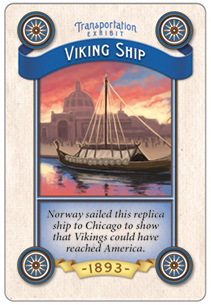 The problem with these same cards, however, is the concern that their physical durability won’t hold up in the long term. World’s Fair 1893 is a fairly quick and casual game whose ease of accessibility makes it incredibly replayable. Unfortunately, due to the repeated handling and shuffling of these cards, they will be prone to premature wear from regular use. As such, if it’s a game that enters your regular rotation we recommend sleeving them.
The problem with these same cards, however, is the concern that their physical durability won’t hold up in the long term. World’s Fair 1893 is a fairly quick and casual game whose ease of accessibility makes it incredibly replayable. Unfortunately, due to the repeated handling and shuffling of these cards, they will be prone to premature wear from regular use. As such, if it’s a game that enters your regular rotation we recommend sleeving them.
The other minor area is with the the game’s overlapping and somewhat redundant token types. World’s Fair comes with two types of tokens that you receive at the end of each round: money for your Midway tickets and ribbons for controlling different Areas. Although they each embody different sides of the fair’s flavor, they are otherwise interchangeable. There is zero substantive difference between the two for scoring purposes since the face value of both kinds are added together in the end. World’s Fair 1893 has a simple enough scoring system that it doesn’t really require two token sets effectively serving the same purpose, which at times can make using both feel unnecessary and somewhat redundant.
That being said, neither of these issues fundamentally detract from the game’s overall worth, nor will they deter Immersionists from enjoying it. World’s Fair 1893 does a praiseworthy job spreading its premise throughout the game, and while the theme isn’t deep, expect this group to be lining up for an admission ticket all the same. At least for a while.
The Takeaway
With the banners streaming and lights turned up, this game’s attempt at honoring the White City clearly succeeds. World’s Fair 1893 carefully infuses elements of a unique setting alongside a concise but easy to learn set of mechanics, and it does an excellent job creating a venue where simple rules meet meaningful decisions. That said, while the game isn’t hefty, don’t equate short with effortless here, as players have more gameplay options than first appears. Ironically, though ample in flavor, the game’s one detraction is that it takes too light a touch with the theme and not wading far enough into its namesake. Nonetheless, with a dual emphasis on player decisions and keeping complexity to a minimum, World’s Fair 1893 bears all the markings of an ideal Gateway Plus Game, complete with the right balance of accessibility and mild strategic depth. The only thing missing are the Cracker Jacks.
World’s Fair 1893 is a product of Foxtrot Games and Renegade Games Studios.
Cardboard Republic Snapshot Scoring (Based on scale of 5):
Artwork: 4
Rules Clarity: 5
Replay Value: 4.5
Physical Quality: 3.5
Overall Score: 4.5

